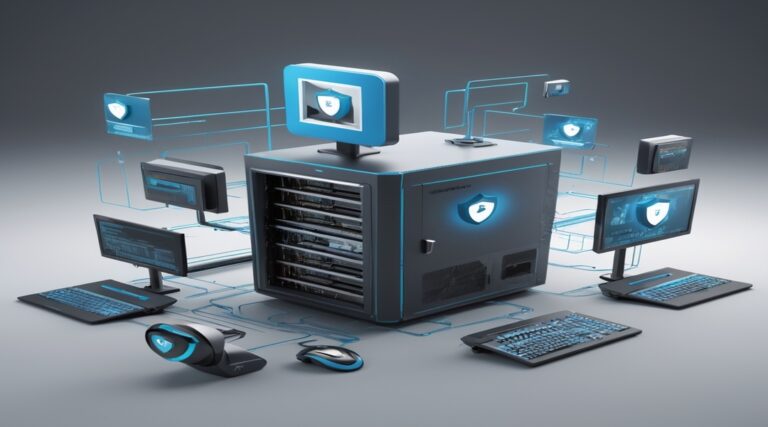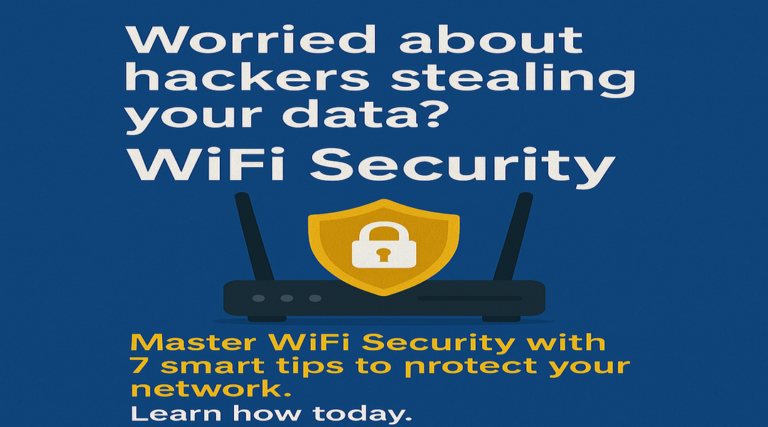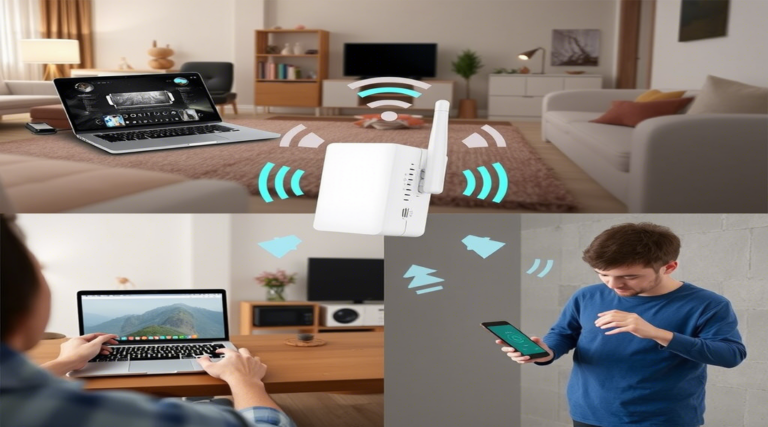Network Security: 7 Best Practices to Stay Protected
In today’s hyperconnected digital landscape, network security isn’t just an IT concern—it’s a fundamental business imperative. Every 39 seconds, a hacker attacks someone online, with an estimated 300,000 new malware programs created daily. These alarming statistics highlight why robust network security should be at the forefront of every organization’s priorities.
The 2021 Colonial Pipeline ransomware attack demonstrated how devastating network vulnerabilities can be, resulting in a $4.4 million ransom payment and widespread fuel shortages across the eastern United States. This serves as a stark reminder that network breaches can impact not just your data but have far-reaching consequences affecting critical infrastructure, reputation, and financial stability.
As cyber threats grow increasingly sophisticated, the gap between security measures and attack methods widens. Small businesses are particularly vulnerable, with 43% of all cyber attacks targeting small businesses—and 60% of those attacked going out of business within six months.
But there’s good news: implementing comprehensive network security strategies significantly reduces your risk exposure. By following industry best practices and utilizing appropriate tools, you can create a robust defense system that protects your valuable digital assets from today’s evolving threats. Let’s explore how you can fortify your network security posture and stay one step ahead of cybercriminals.
Table of Contents
What is Network Security?
Network security encompasses all activities designed to protect the integrity, confidentiality, and accessibility of your computer networks and data. It’s essentially a multi-layered defense system that shields your digital infrastructure from unauthorized access, misuse, malfunction, modification, destruction, or improper disclosure.
Think of network security as the digital equivalent of your home security system—just as you have locks, alarms, and surveillance cameras protecting your physical space, network security employs firewalls, encryption, and intrusion detection systems to safeguard your digital environment. Without it, your valuable data is essentially sitting in an unlocked house in a high-crime neighborhood.
Network security doesn’t just block threats—it enables your business to function with confidence in an increasingly digital world. Whether you’re a small business or large enterprise, strong network security is no longer optional but essential for survival in today’s threat landscape.
Recommended Articles Before Buying a Wi-Fi Extender
| Article | Description | Link |
|---|---|---|
| 10 Reasons To Invest In A WiFi Range Extender Right Now | Discover why investing in a Wi-Fi extender is essential for better internet performance. | Follow the link to learn more |
| Why You Need A WiFi Range Extender For Better Connectivity Today | Learn how a Wi-Fi extender can eliminate dead zones and improve your online experience. | Follow the link to learn more |
| How To Boost Your Signal With A WiFi Range Extender In 5 Easy Steps | Step-by-step guide on improving your Wi-Fi signal using a range extender. | Follow the link to learn more |
| WiFi Range Extender: 5 Key Differences Between New Models | Understand the latest upgrades and features in modern Wi-Fi extenders. | Follow the link to learn more |
| WiFi Range Extender: How 5 Simple Settings Maximize Your Coverage | Explore 5 crucial settings that can greatly enhance your Wi-Fi coverage. | Follow the link to learn more |
| WiFi Range Extender: 8 Must-Know Tricks For Better Coverage | Useful tricks to help you get the most out of your Wi-Fi extender. | Follow the link to learn more |
| WiFi Range Extender: 5 Reasons Your Signal Is Weak | Learn the common mistakes and reasons why your Wi-Fi signal might be poor. | Follow the link to learn more |
If you’re planning to buy a Wi-Fi extender, it’s highly recommended to read these articles first so you can make an informed decision and get the best performance from your device.
Recommended Wi-Fi Extenders To Buy
| Product | Description | Link |
|---|---|---|
| OURLIFE 1200Mbps WiFi Repeater | Dual Band Wireless Amplifier with 2.4G & 5GHz for long-range signal boosting in home or office. | Follow the link to learn more |
| Ourlife 1200Mbps Dual-Band WiFi Signal Booster | Covers over 5000 sq ft, compatible with Alexa, with Ethernet Port, great for large spaces. | Follow the link to learn more |
| High-Speed 300Mbps WiFi Repeater Extender | Compact design, 802.11N compatible, easy setup with WPS button, indoor/outdoor use. | Follow the link to learn more |
| 300Mbps Remote Wireless Relay Access Point | Simple Wi-Fi signal booster, ideal for smaller coverage expansion needs. | Follow the link to learn more |
| WAVLINK AC1200 Dual Band Wireless Router | Supports Router/Access Point/Repeater modes, 5GHz & 2.4GHz bands, excellent for home & office use. | Follow the link to learn more |
Temu Promotions Schedule
| Promotion | Link |
|---|---|
| Rookie Mission | Follow the link to learn more |
| $10,000 Ranking Race | Follow the link to learn more |
| $3,000 Referral Race | Follow the link to learn more |
| $100 Coupon Bundle | Follow the link to learn more |
| $100 Coupon Bundle (Alternate Link) | Follow the link to learn more |
| Free Gifts | Follow the link to learn more |
| Free Gifts (Alternate Link) | Follow the link to learn more |
| Exclusive Deal | Follow the link to learn more |
| Exclusive Deal (Alternate Link) | Follow the link to learn more |
| Save Big | Follow the link to learn more |
| $2 Cash Reward | Follow the link to learn more |
Why You Need Network Security
1. Protection Against Cyber Threats
Today’s digital landscape is teeming with sophisticated threats designed to exploit network vulnerabilities. Malware infections can silently infiltrate systems, extracting sensitive data or encrypting critical files. Phishing attacks trick even vigilant employees into revealing credentials, while DDoS attacks can overwhelm servers and bring operations to a grinding halt.
The 2017 WannaCry ransomware attack affected over 200,000 computers across 150 countries, causing billions in damages and bringing organizations like the UK’s National Health Service to a standstill. Without robust network security, these threats pose existential risks to your organization’s ability to function.
2. Financial and Data Security Benefits
The financial implications of inadequate network security are staggering. According to IBM’s Cost of a Data Breach Report, the average data breach costs $4.24 million. Beyond immediate financial losses, compromised customer data often leads to damaged reputation, lost business, and potential legal liabilities.
Network security safeguards your most valuable assets—intellectual property, customer information, financial records, and operational data. When protected properly, this data remains confidential and maintains its integrity, ensuring business continuity and preserving customer trust.
3. Compliance with Security Regulations
Regulatory frameworks like GDPR, HIPAA, PCI DSS, and CCPA impose strict requirements on how organizations handle sensitive data. Non-compliance penalties can be severe—GDPR violations, for instance, can result in fines up to €20 million or 4% of annual global turnover.
Implementing proper network security measures isn’t just about avoiding fines; it demonstrates your commitment to data protection and professional handling of sensitive information. This compliance creates competitive advantages, opening doors to clients and partners who prioritize security in their business relationships.

How to Implement Network Security
Quick Overview
A robust network security system combines multiple layers of defense. At its core are technologies like next-generation firewalls, data encryption protocols, and strong authentication methods. However, technical solutions alone aren’t enough—regular security assessments, timely software updates, continuous network monitoring, and comprehensive employee training are equally essential components.
The most effective network security strategies take a holistic approach, addressing technology, processes, and people. This comprehensive framework ensures no vulnerability remains exploited, creating a resilient security posture adaptable to emerging threats.
Key Components of Network Security
1. Firewalls
Firewalls serve as the first line of defense, monitoring and filtering incoming and outgoing network traffic based on predetermined security rules. Modern next-generation firewalls (NGFWs) offer advanced features including deep packet inspection, intrusion prevention capabilities, and application awareness to identify and block sophisticated threats.
2. Intrusion Detection and Prevention Systems (IDPS)
IDPS solutions continuously monitor network traffic for suspicious activities and policy violations. While detection systems alert security teams to potential breaches, prevention systems take immediate action to block identified threats, providing real-time protection against active exploits and zero-day vulnerabilities.
3. Virtual Private Networks (VPNs)
VPNs create encrypted connections over less secure networks, ensuring data transmitted between remote users and corporate networks remains protected from interception. This technology is especially crucial for remote work environments, allowing employees to securely access company resources from any location.
4. Endpoint Security Solutions
With the proliferation of connected devices, endpoint protection has become essential. These solutions safeguard individual devices accessing your network through antivirus protection, device encryption, application control, and behavioral analysis that identifies suspicious activities before they cause damage.
5. Multi-Factor Authentication (MFA)
MFA adds crucial security layers by requiring users to verify their identity through multiple methods beyond passwords. By combining something you know (password), something you have (security token), and something you are (biometric verification), MFA significantly reduces unauthorized access risks even if credentials are compromised.
6. Data Encryption
Encryption transforms readable data into coded information that can only be deciphered with the proper encryption key. Whether data is in transit across networks or at rest in storage systems, encryption ensures that intercepted information remains unintelligible to unauthorized parties.
7. Security Information and Event Management (SIEM)
SIEM systems collect and analyze security event data from across your network infrastructure, providing real-time visibility into potential security incidents. By correlating events from different sources, these platforms help identify patterns indicating potential breaches and facilitate rapid response to emerging threats.
Step-by-Step Guide to Strengthening Network Security
1. Conduct a Comprehensive Security Assessment
Begin by identifying your critical assets and mapping your network topology. Use vulnerability scanning tools to detect potential weaknesses in your infrastructure. Document all findings to establish your baseline security posture.
2. Develop a Security Policy Framework
Create clear, enforceable security policies addressing access controls, acceptable use, incident response, and disaster recovery. Ensure these policies align with relevant compliance requirements and business objectives.
3. Implement Layered Security Controls
Deploy firewalls at network perimeters and between network segments. Install and configure intrusion detection/prevention systems. Implement strong encryption for data in transit and at rest. Secure all endpoints with appropriate protection software.
4. Establish Strong Authentication Protocols
Enforce complex password requirements across all systems. Implement multi-factor authentication for accessing sensitive systems and data. Consider single sign-on solutions that maintain security while improving user experience.
5. Maintain Regular Update Protocols
Create a systematic approach to patch management for all systems, applications, and devices. Automate updates where appropriate, and test patches before widespread deployment. Remove or securely isolate legacy systems that cannot be updated.
6. Train Your Employees
Develop comprehensive security awareness programs that educate staff about common threats like phishing and social engineering. Conduct regular training sessions and simulated phishing exercises to reinforce security practices.
7. Monitor and Respond
Implement continuous monitoring across all network segments. Establish alert thresholds and response procedures for different types of security events. Regularly review security logs and conduct periodic penetration testing to identify vulnerabilities before attackers can exploit them.
What to Combine Network Security With
Cloud Security Solutions
As organizations increasingly migrate to cloud environments, integrating cloud security solutions with traditional network security becomes essential. Cloud access security brokers (CASBs), secure access service edge (SASE) frameworks, and cloud workload protection platforms ensure consistent security controls across hybrid environments.
Zero Trust Architecture
The zero trust model operates on the principle of “never trust, always verify,” requiring strict identity verification for every person and device attempting to access resources, regardless of location. This approach complements network security by eliminating implicit trust and continuously validating every access request.
AI-Powered Threat Detection Systems
Artificial intelligence and machine learning technologies enhance network security by analyzing vast amounts of data to identify anomalous patterns indicating potential threats. These systems can detect subtle indicators of compromise that traditional rule-based systems might miss, providing earlier warning of sophisticated attacks.
Cyber Hygiene Training for Employees
The human element remains a critical component of security. Regular training programs that promote good “cyber hygiene” habits—like recognizing phishing attempts, using secure passwords, and following proper data handling procedures—create an essential complement to technical security measures.
Top Tips for Strengthening Network Security
Password Management Excellence
Implement a password manager for your organization to generate and store complex, unique passwords. Enforce regular password changes and prohibit password reuse across different systems. Consider passwordless authentication methods where appropriate.
Firewall Configuration Best Practices
Configure firewalls based on the principle of least privilege, denying all traffic by default and allowing only necessary connections. Segment your network to contain potential breaches and regularly audit firewall rules to remove unnecessary or outdated permissions.
Regular Penetration Testing
Conduct both internal and external penetration tests at least annually to identify vulnerabilities before attackers exploit them. Use tests to validate the effectiveness of your security controls and prioritize remediation efforts based on risk levels.
Avoid Common Security Pitfalls
Don’t neglect IoT device security—these often have weak default configurations. Beware of shadow IT where employees use unauthorized applications. Never delay critical security patches, especially for internet-facing systems. Implement proper access controls for third-party vendors accessing your systems.
Storing and Managing Security Logs
Comprehensive logging is fundamental to effective security monitoring and incident response. Configure systems to capture relevant security events including login attempts, privilege changes, and access to sensitive data. Ensure log integrity by storing them on dedicated, secure servers with strict access controls.
Establish retention policies that balance security needs with storage constraints, typically keeping logs for at least 6-12 months. Implement automated log analysis tools that can correlate events across different systems to identify potential security incidents more effectively.
For optimal security visibility, consider implementing a SIEM solution that aggregates logs from across your network infrastructure. This centralized approach enables security teams to detect complex attack patterns that might not be apparent when viewing logs from individual systems in isolation.
FAQ About Network Security
What type of firewall is best for small business network security?
For small businesses, a unified threat management (UTM) firewall often provides the best balance of protection and manageability. Solutions like the Barracuda firewall offer comprehensive security features including intrusion prevention, content filtering, and VPN capabilities in a single appliance. When selecting a firewall for small business, prioritize ease of management, automated updates, and scalability to accommodate future growth.
How does Barracuda firewall compare to other network security solutions?
The Barracuda firewall distinguishes itself through its comprehensive approach to network protection, combining traditional firewall capabilities with advanced threat protection features. Unlike basic firewalls that only filter traffic, Barracuda integrates email security, web application protection, and network access control. While comparable to solutions from Fortinet or SonicWall, Barracuda often offers more intuitive management interfaces and better cloud integration, making it particularly suitable for businesses with limited IT resources.
What are the essential components of network information security?
Comprehensive network information security requires multiple layers of protection. Beyond traditional perimeter defenses like firewalls, essential components include data encryption for information both in transit and at rest, robust identity and access management systems, continuous network monitoring capabilities, and regular security assessments. Organizations should also implement security awareness training, incident response procedures, and business continuity planning as part of their overall network information security strategy.
What network protection measures should every business implement?
At minimum, every business should implement firewall protection, regular software updates, strong authentication methods, and endpoint security solutions. Data backup and recovery systems are equally essential, as is employee security awareness training. For more comprehensive network protection, consider implementing network segmentation, intrusion detection systems, and encryption for sensitive data. Regular security assessments help identify and address vulnerabilities before they can be exploited.
How do I choose between different network security providers?
When evaluating network security providers, consider their experience protecting organizations similar to yours in size and industry. Review their security portfolio comprehensiveness, ensuring they offer integrated solutions rather than disconnected point products. Assess their threat intelligence capabilities, support services quality, and ability to scale with your business. Finally, look for providers who emphasize proactive security approaches and offer transparent reporting on security effectiveness.
What makes network security solutions cost-effective for small businesses?
Cost-effective network security solutions for small businesses offer comprehensive protection without requiring extensive technical expertise to manage. Look for cloud-managed solutions that reduce on-premises hardware requirements and operational complexity. Consider providers offering flexible subscription-based pricing models that align costs with actual usage and business growth. The most cost-effective solutions combine multiple security functions in integrated platforms, reducing the total cost of ownership while maintaining robust protection levels.







